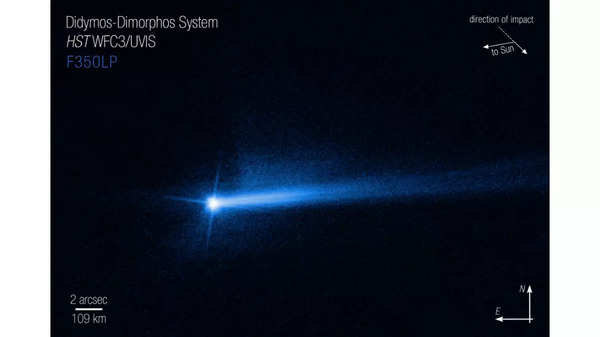The spacecraft collision did cause Dimorphos’ original orbit of 11 hour and 55 minute around Didymos to shorten by about 32 minutes, as per NASA.
Tails of dust
Now, NASA has something new to report regarding the same asteroid it slammed a spacecraft into. According to the American space agency, the Dimorphos asteroid has two “tails of dust” now, which was confirmed via a snap taken by the Hubble Space Telescope.
Two days after the spacecraft collided with the asteroid, it was found that the asteroid had grown a tail that stretched more than 10,000 km (6,000 miles).
The Hubble telescope took 18 images of Didymos in the weeks after the collision took place and found that sometime between October 2 and October 8, the asteroid had grown a second tail.

“At the top right of the image, there are arrows indicating the direction of impact by the DART spacecraft. The direction of impact arrow points in the 10 o’clock direction. The ‘to Sun’ arrow points in the 8 o’clock direction. Following impact, Hubble made 18 observations of the system. Imagery indicates the second tail formed between Oct. 2 and Oct. 8. At the bottom right are compass arrows indicating the orientation of the image on the sky. The north arrow points in the directly straight up. The east arrow points to the left in the 9 o’clock direction. In the top left corner of each image are the filters used to create the image. For Hubble, F350LP is blue.”, said NASA in a website post, explaining the image taken.
NASA will be investigating the appearance of the second tail and the Didymos system in the coming months.
For all the latest Technology News Click Here
For the latest news and updates, follow us on Google News.

